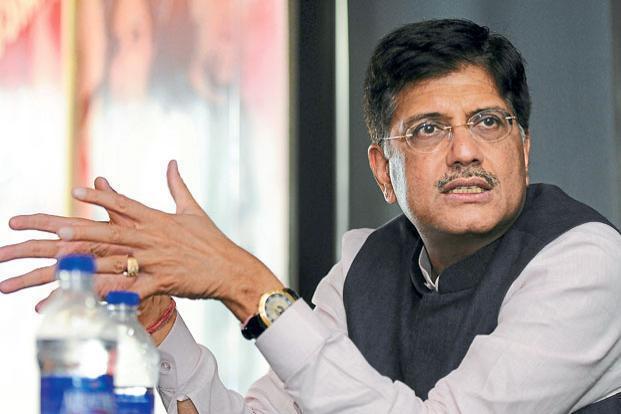NEW DELHI: Going beyond incremental growth, India has attained the fastest growth in highways building at 27 km a day and is all set for a quantum leap in transport infrastructure be it railways, waterways, airways or digiways, Union Finance Minister Piyush Goyal said Friday.
Terming infrastructure as the “backbone” of any nation’s development, Goyal while presenting the interim Budget for 2019-20 in the Lok Sabha said India aspires to be a USD 10 trillion economy in the next eight years, and on the anvil is next generation infrastructure of roads, railways, seaports, airports, urban transport, gas and electric transmission and inland waterways.
Infrastructure is the backbone of any nation’s development and quality of life. Whether it is highways or railways or airways or even digi-ways, “We have gone beyond incremental growth to attain transformative achievements,” Goyal said.
“Today, India is the fastest highway developer in the world with 27 km of highways built each day. Projects stuck for decades like the Eastern Peripheral Highway around Delhi or the Bogibeel rail-cumroad bridge in Assam and Arunachal Pradesh have been completed,” he said.
Road Transport and Highways Minister Nitin Gadkari termed the budget as “historical, revolutionary” and a budget for the “poor, farmers and the middle class” saying 40 to 50 crore people will directly benefit from it.
The allocation for highways sector has been increased to about Rs 83,000 crore and the budget takes care of growing infrastructure needs, he said.
Congratulating Prime Minister Narendra Modi for a dynamic budget, Gadkari said it is intended for a “New India”.
On aviation, Goyal said because of ‘UDAAN Scheme’, an ordinary citizen is also travelling by air and the number of operational airports has crossed 100 with the commissioning of the Pakyong airport in Sikkim.
Domestic passenger traffic has doubled during the last five years leading to large number of jobs being created also, he said.
Mentioning the ambitious Sagarmala initiative of the government, he said India’s long coastline has the potential of becoming the strength of the economy, particularly through exploitation of the Blue Economy, to ensure better standards and quality of life for a large number of people living in the coastal areas.
“Our efforts in the Sagarmala programme will be scaled up and we will develop other inland waterways faster,” the minister said adding that “for the first time, container freight movement has started on inland waterways from Kolkata to Varanasi”.
He said the government will introduce container cargo movement to the North East as well by improving the navigation capacity of the Brahmaputra river while will develop waterways.
As far as Indian Railways is concerned, he said it has experienced the safest year in its history and all unmanned level crossings on broad gauge network have been eliminated.
“Introduction of the first indigenously developed and manufactured semi high-speed “Vande Bharat Express” will give the Indian passengers world class experience with speed, service and safety. This major leap in wholly developed technology by our engineers will give an impetus to the Make in India programme and create jobs,” he said.
Capital support from the budget for railways is proposed at Rs 64,587 crore in 2019-20 (BE).
The railways’ overall capital expenditure programme is of Rs 1,58,658 crore, he said.
Mentioning infrastructure in the North East, the minister said Arunachal Pradesh came on the air map recently and Meghalaya, Tripura and Mizoram have come on India’s rail map for the first time.
Allocation for the North Eastern Areas was increased by 21 per cent to Rs 58,166 crore in 2019-20 BE over 2018-19 BE.
Giving stress on digital infrastructure in the villages, including connectivity he announced that “the government will make 1 lakh villages into Digital Villages over next five years”.
About the Pradhan Mantri Gram Sadak Yojana (PMGSY), the Minister said construction of rural roads has been tripled.
“15.80 lakh habitations out of a total of 17.84 lakh habitations have already been connected with pucca roads and work is going on to complete the rest very soon.
The PMGSY saw increased allocation of Rs 19,000 crore in BE 2019-20 as against Rs 15,500 crore in RE 2018-19.
“There was time when a child used to reach school after walking on a foot trail, today the situation has changed and a bus can reach her/his village During the period 2014-18, a total number of 1.53 crore houses have been built under the Pradhan Mantri Awas Yojana,” he said. PTI







